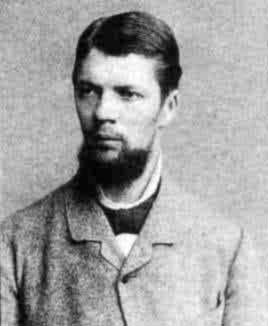
Friedrich Wilhelm Franz Meyer
 المؤلف:
W Burau
المؤلف:
W Burau
 المصدر:
Biography in Dictionary of Scientific Biography
المصدر:
Biography in Dictionary of Scientific Biography
 الجزء والصفحة:
...
الجزء والصفحة:
...
 25-2-2017
25-2-2017
 810
810
Born: 2 September 1856 in Magdeburg, Germany
Died: 11 June 1934 in Königsberg, Germany (now Kaliningrad, Russia)

Wilhelm Meyer followed the German tradition of the time in studying at a number of different universities. He attended the University of Leipzig and studied at the University of Berlin taking courses by Kummer, Weierstrass and Kronecker. He was awarded his doctorate in 1878 by the University of Munich.
Meyer presented his habilitation to the University of Tübingen in 1880 and taught there until 1888. While in Tübingen he published his habilitation thesis Apolarität und rationale Kurven, eine systematische Voruntersuchung zu einer allgemeinen Theorie der linearen Räume in 1883. This impressive work extended apolarity theory as introduced by Reye to projective geometry in several dimensions using the theory of rational curves. Meyer was appointed as professor of mathematics at the Bergakademie (mining academy) in Clausthal-Zellerfeld in the Harz Mountains in 1888. In October 1897 he moved to a chair at the University of Königsberg where he taught for 27 years until he retired in 1924. In fact it is worth noting that Sommerfeld was appointed to fill the chair of mathematics at the mining academy in Clausthal-Zellerfeld when Meyer left in 1897.
As indicated by the thesis which he submitted for his habilitation, the title of which we quoted above, Meyer's interests lie in the study of algebraic geometry, algebraic curves and projective invariant theory. His expertise in invariant theory led to an invitation from the recently founded German Mathematical Society (Deutsche Mathematiker-Vereinigung) to write a report on the subject which he did, publishing his article of over 200 pages Bericht über den gegenwärtigen Stand der Invariantentheorie in Jahresberichte der Deutsche Mathematiker-Vereinigung in 1892. The report presented the development of the subject from the middle of the century up to the major results of Gordan and Hilbert. Meyer's article was very influential and was translated from German into French, Italian and Polish.
Together with Heinrich Weber and Klein, Meyer founded the Encyclopädie der Mathematischen Wissenschaften. This was a massive project, supported by a number of German academies, producing 20 volumes between 1900 and 1930. Not only did Meyer play a large role in the planning of this project but he contributed many survey articles to it. In particular he wrote articles on invariant theory, third order surfaces, and surfaces of order higher than three. He also co-authored an article on potential theory with H Burkhardt, and an article on the geometry of the triangle with G Berkhan.
Meyer was an extremely productive mathematician, writing over 130 articles and over 2000 reviews for Fortschritte der Mathematik. He was able to bring all this wide experience to bear as an editor doing an exceptional job in this role. He [1]:-
... gave lectures discussing the essential aspects of mathematical research in the spirit of Klein's Erlangen programme, and gave lectures discussing the essential aspects of mathematical research in the spirit of the time and emphasizing the importance of simple algebraic identities, the symmetries of group theory, and transformation principles as a source of geometric theorems. [he] was an excellent teacher who had many students. Most East Prussian mathematics teachers at the beginning of the twentieth century were trained by him.
Meyer was unlucky in many ways since the direction in which mathematics developed left his research contributions outside the mainstream. In particular Hilbert's results on invariant theory were so powerful that they ended a chapter in the development of the subject and so Meyer's many contributions in this area are little remembered today. Likewise the work in his habilitation thesis went into the geometrical theory of Segre manifolds set up by Corrado Segre.
- W Burau, Biography in Dictionary of Scientific Biography (New York 1970-1990).
http://www.encyclopedia.com/doc/1G2-2830902944.html
Articles:
- B Arndt, W F Meyer zum Gedächtnis, Jahresberichte der Deutschen Mathematiker-Vereinigung 45 (1935), 99-113.
 الاكثر قراءة في 1850to1859
الاكثر قراءة في 1850to1859
 اخر الاخبار
اخر الاخبار
اخبار العتبة العباسية المقدسة


